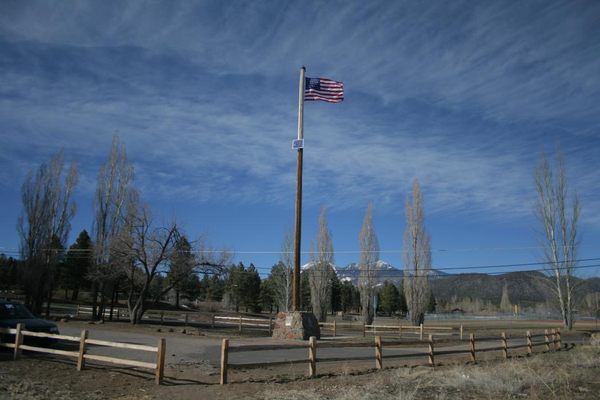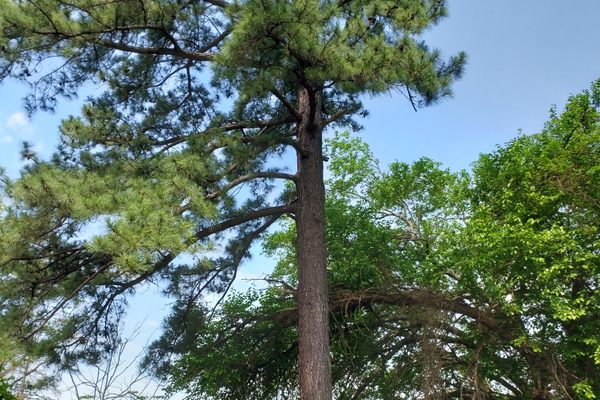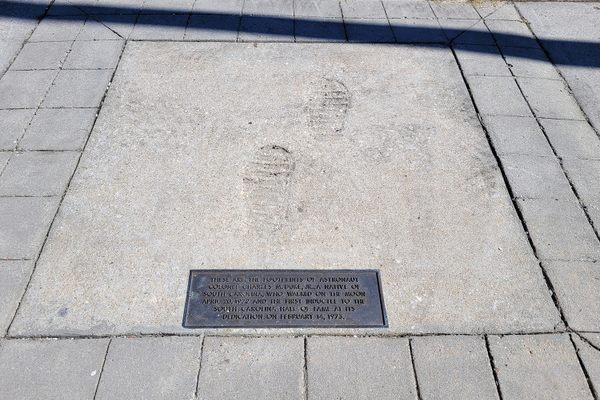AO Edited
Grover the Geologic Rover
An important piece of history from mankind's journey to the moon sits in the lobby of a government science lab.
Every Apollo astronaut who traveled to the moon first trained for their mission in Flagstaff, Arizona. The area’s hills and craters made of volcanic cinders were thought to closely approximate the surface of the moon and prepare astronauts for what to expect while navigating the lunar terrain. For the last three Apollo missions, NASA sent lunar roving vehicles along with the astronauts, to allow them to travel farther from the lunar module. Several facsimiles of the vehicles were constructed to further help the astronauts prepare to drive around on the moon’s surface while conducting experiments and collecting samples and data.
The lunar rovers that went to the moon had to be carefully constructed to exact specifications in scientific laboratories. Because they were built to carry astronauts, their equipment, and rock samples in the moon’s lower-gravity environment, they couldn’t be test-driven on Earth. The real lunar rovers would have collapsed under the weight of the astronauts if they were used during the astronauts’ training. Sturdier replicas were made for the astronauts to get a feel for how the vehicles maneuvered, how to make simple repairs to the vehicles, and how to use the scientific instruments.
The Boeing corporation constructed four lunar rovers at a cost of about $9,500,000 each. The United States Geological Survey mechanics in Flagstaff built two practice rovers at a cost of about $1,900 each. To keep costs down, many of the parts came from scrapped cars and planes. These practice rovers were given the nickname “Grover,” short for “geologic rover”.
Although primarily driven by astronauts on the expanses of volcanic cinders near Flagstaff, the Grovers were also test-driven in the Mojave Desert in California and the Rio Grande gorge in New Mexico. Extensive time spent practicing with the Grovers was necessary because it handled much differently than other vehicles. Each wheel had a separate battery-powered motor and the whole thing had a max speed of 7 miles per hour.
NASA’s human missions to the moon ended after Apollo 17 in 1972. The three lunar rovers that traveled with astronauts to the moon were left there, and still sit on the lunar surface today. For a while, Grover was on display at the United States Geological Survey headquarters in Virginia but in the 1980’s it was moved to a museum in Alamogordo, New Mexico. It stayed there until 2002 when new facilities were built for the USGS Astrogeology Science Center in Flagstaff. Since then, the Grover along with other objects from Flagstaff’s role in NASA’s lunar missions have been on display in the lobby of the Shoemaker Building, including newspaper cutouts about the moon landings from local papers and handprints of various astronauts preserved in cement, including one from Neil Armstrong, the first man to walk on the moon.
Know Before You Go
Grover and other informational displays are in the lobby and hallways of the Shoemaker Building (Building 6) at the USGS Astrogeology Science Center (2255 N. Gemini Drive, Flagstaff, AZ). The public can schedule a free tour by appointment Monday through Friday, except for federal holidays. Free tours can be scheduled at [email protected].





















Follow us on Twitter to get the latest on the world's hidden wonders.
Like us on Facebook to get the latest on the world's hidden wonders.
Follow us on Twitter Like us on Facebook